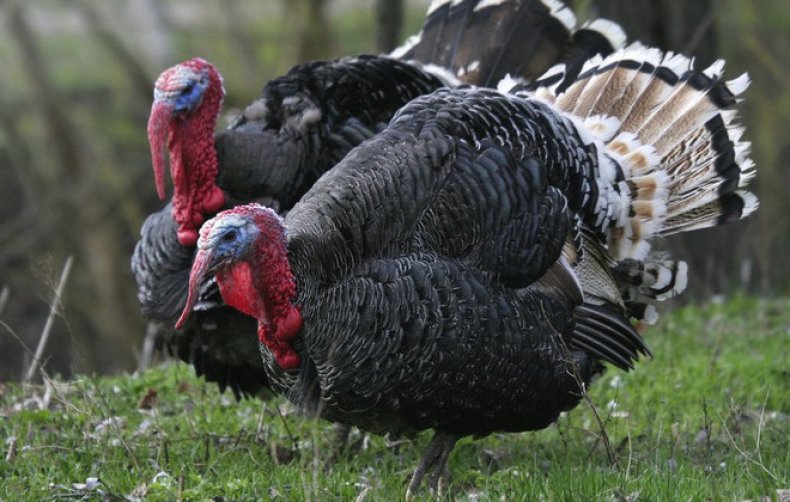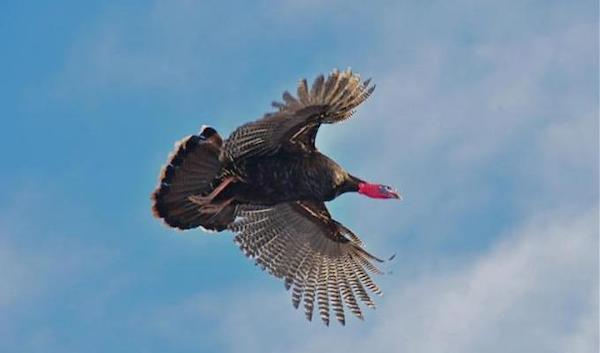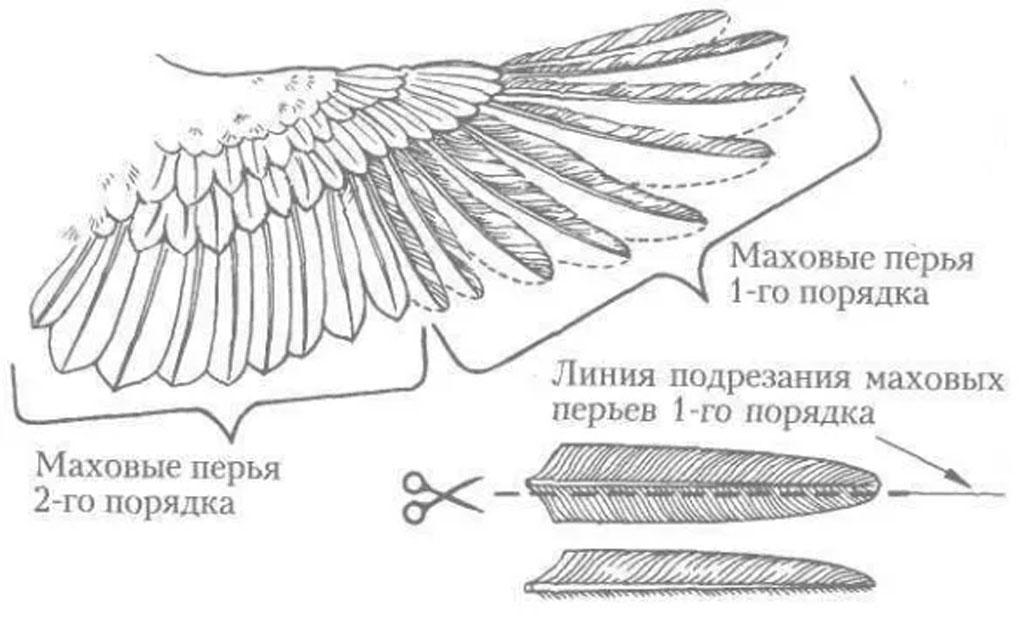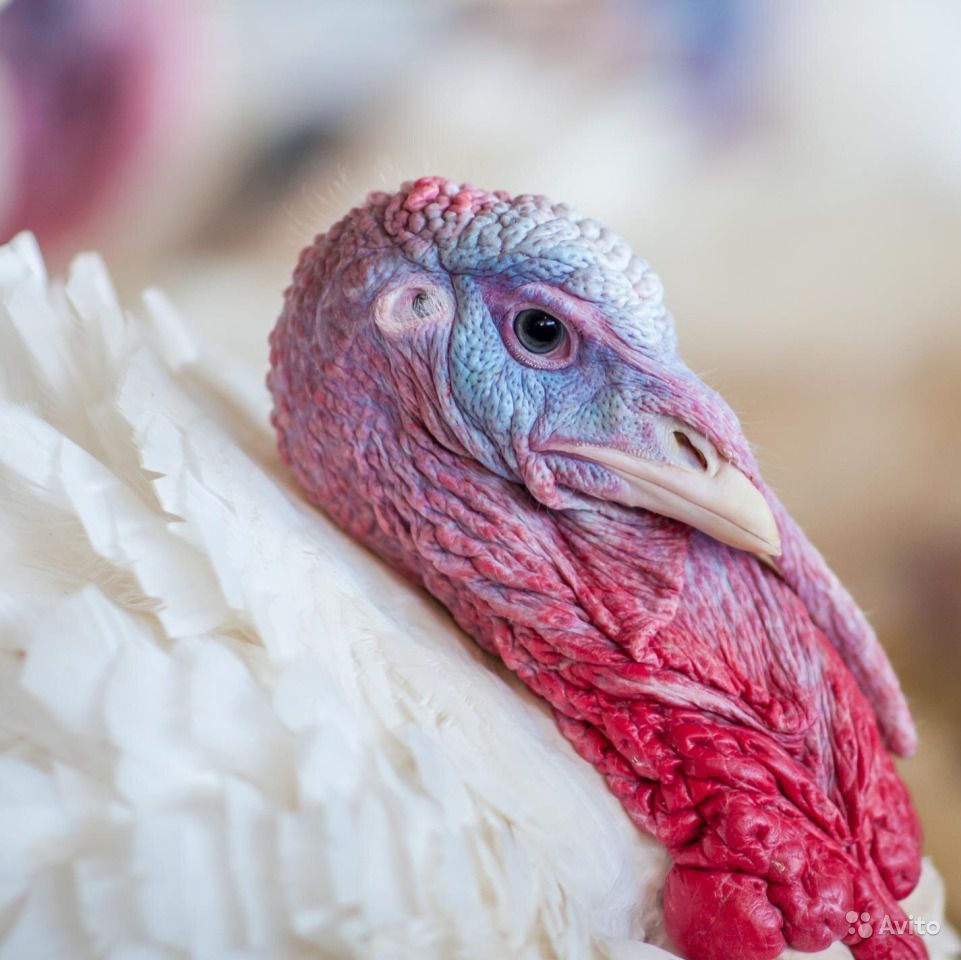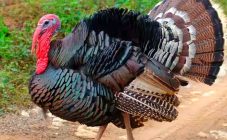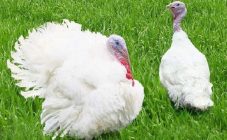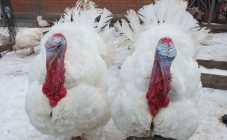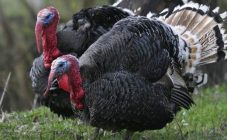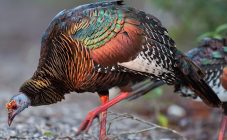Content:
The correct name for this bird is home turkey. The male is called - turkey, hence the colloquial name of the female - turkey, chick - turkey.
The wild turkey was domesticated by the native people of America, the Aztecs, long before the appearance of Europeans on their land, who brought this beautiful and powerful bird with excellent dietary meat to Spain in the 16th century. From there, she settled on farms throughout Europe.
This bird is from the class of chickens. Yes, yes, they are direct relatives of common chickens and were previously called Indian or Spanish chickens in Russia.
Fly-prone turkey breeds
In the modern classification, there are more than thirty breeds of domestic turkeys of various weights and directions of breeding:
- egg;
- meat and egg;
- meat breeds, the so-called broilers.
Several breeds are in greatest demand on the farmsteads of Russians:
- Bronze broad-breasted;
- White Moscow;
- White broad-breasted;
- The so-called Bigi, crosses bred by the British with the markings Big-6, Big-8, Big-9.
Big is considered the largest in the world at number six; the turkeys of this cross in adulthood may well reach 40 kilograms.
And now a logical question arises: can a bird with such a huge weight fly and fly over the fence? It turns out maybe, and how! Adult turkeys are capable of flying at speeds over 20 kilometers per hour.
Of course, they will not fly to the south for the winter, but this bird is quite capable of flying over a two-meter fence in search of greener and more tasty grass, or flying up a tree branch to feast on fruit. And at the same time dig up and trample the beds in the master's or neighbor's garden.
All other breeds will require their owners to answer the question - what to do to prevent the turkeys from flying? And taking urgent measures to restrict the freedom of poultry, in order to avoid conflicts with neighbors and the safety of the bird itself. Otherwise, leaving the allotted territory, the turkey may well die under the wheels of a car or be torn apart by dogs.
Methods of restricting freedom of turkeys
There are several ways to restrict the freedom of turkeys:
- Increase the height of the enclosure fence to 2-2.5 meters and tighten the top with a net. This must be done so that the bird cannot leave the enclosure.
- Tangle the wings. This operation is not so difficult, but it requires some experience and attention. To do this, bandage the base of the bird's wings with a wide, flat braid, passing the braid under the belly. It is necessary to bandage carefully so as not to crush the joints, and at the same time the bird could not spread its wings and perform flapping movements with them.
- Burn the first joint on the wings of the day-old turkey poults. The operation is performed with a hot steel plate and can be performed by a veterinarian or experienced person who has tried it under the guidance of a professional. The wing will heal quickly and the bird will forever lose its ability to fly.
- The simplest and correct way that does not cause stress in the bird is to trim the flight feathers on the wings and tail by several centimeters with scissors, depriving the turkeys of the opportunity to lean on the air during takeoff.
Wing clipping in turkeys
How to clip turkeys' wings properly so they don't fly? As a matter of fact, not the wings themselves will be cut off, but the flight feathers on them.Pruning is done in half or two-thirds of the feather so as not to injure the turkey with painful sensations. You need to carry out this operation together, since the bird is large, powerful and it will not be easy to cope with it alone. It is necessary to fill the feeder with grain, this will distract the bird and make it easier to catch.
One person squeezes the bird in its legs, holding it in place with his hands and preventing it from pecking, and the assistant spreads the wing to the side and cuts off the feathers with pruners or large scissors. After that, the same action is carried out with the second wing. Everything must be done quickly and clearly, since delaying the process leads to the bird getting serious stress.
Pruning steps
Pruning is best done in several stages:
- The first step is to trim the secondary flight feathers on both wings. These feathers rest on the bones of the forearm and are smaller relative to the main flight feathers. The main flight feathers rest on the bones of the wing hand. After that, you need to observe for several days, perhaps the turkeys with such a pruning will no longer fly, and the saved main flight feathers will make the pruning invisible and allow you to preserve the decorative appearance.
- If the turkeys continue to fly over the fence, you will have to sacrifice their beautiful appearance and trim the main flight feathers on one wing. This will create an imbalance in the flight phase, turkeys simply will not be able to fly, because the laws of physics have not yet been canceled.
Another interesting question is how high do monthly turkeys fly and can they clip their wings? Monthly turkeys do not fly, but jump from a run, their wings are not adapted for flight, since a full-fledged flight feather has not yet grown on them. And to cut live, it means risking bleeding, which may well lead to the death of the turkey.
Trimming the flight feathers on the wings of turkeys seems to be a difficult and troublesome affair only to those who have never done this. With some skill, the process takes a matter of minutes. Accordingly, the farmer can carry out the procedure on his own, at home.
The advantages of this type of flight restriction are undeniable: the bird does not receive physical injuries that affect its health, and gets the opportunity to graze for a walk, gaining additional weight.
